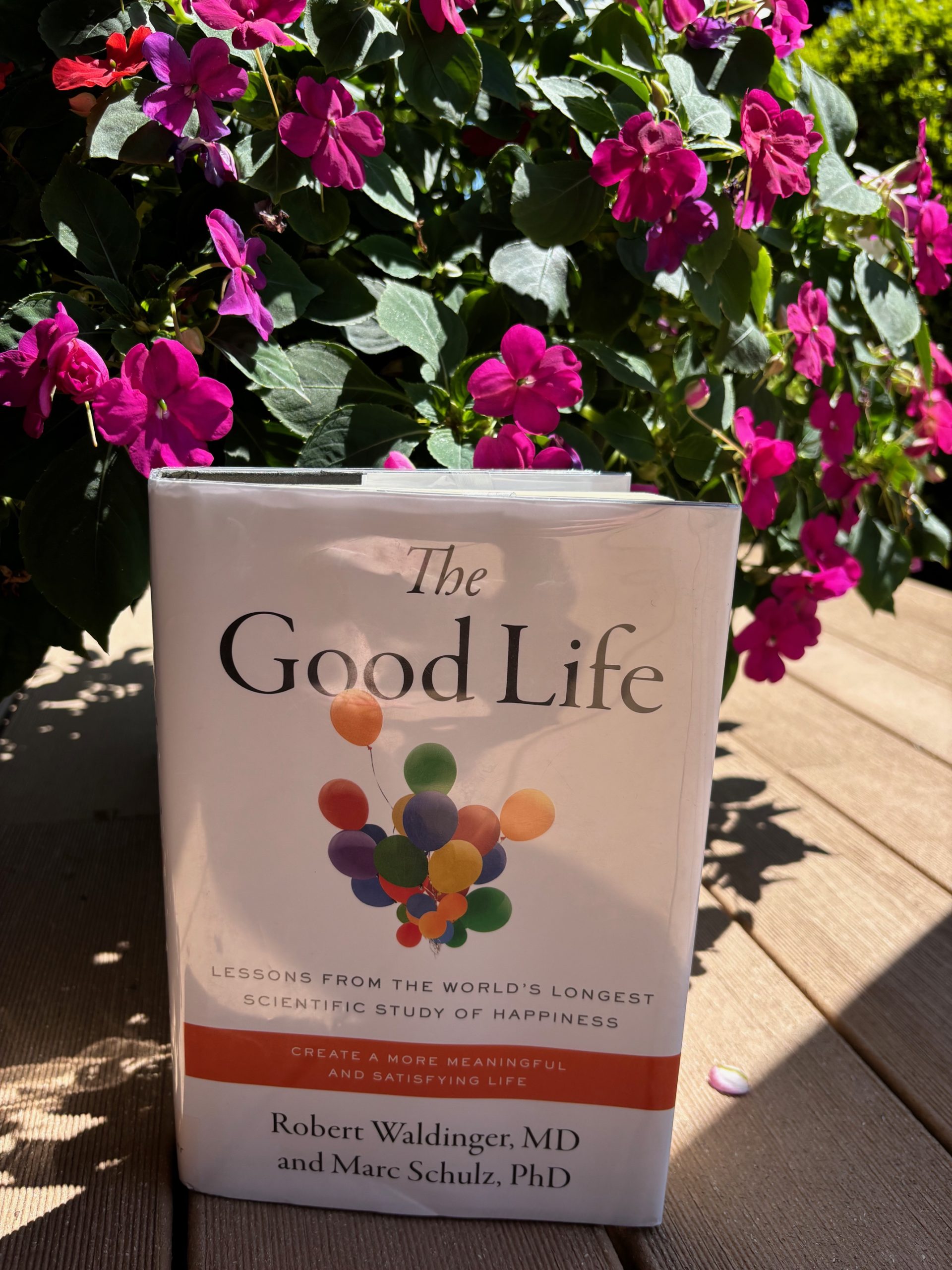
What does ‘the good life’ mean to you?
Some may think of bank accounts, houses, and cars.
Others may veer towards health, laughter, and a sense of contentment.
And still others may describe adventure, exotic travel, and experiences.
But I’m not asking about what others might say. I’m wondering what makes a good life for you?
Exploring The Good Life
Over 80 years ago, researchers began what is now known as the Harvard Study of Adult Development to help answer this ‘good life’ question scientifically. The study participants, who now span multiple generations and a variety of backgrounds, respond to surveys and interviews every couple of years – as well as complete physical health exams, psychological assessments, blood tests, and more – to aid in forming a picture of what supports a happy and meaningful life at any age.
Robert Waldinger and Marc Schulz have summarized this for us – so far, anyway (the study is, of course, ongoing) – in their excellent book, The Good Life.
To say I devoured this book would be an understatement. Between the personal stories, research findings, participant experiences, and results offered, I found this incredibly readable and also incredibly powerful. Here are just two of my takeaways:
The Journey vs The Destination
As cliche as it may sound, it’s so true: It’s not about the destination but rather the path and what we learn, experience, and choose along the way.
“Second by second, you can decide to whom and to what you give your attention,” write Waldinger & Schulz. “Week by week you can prioritize your relationships and choose to be with the people who matter. Year by year you can find purpose and meaning through the lives that you enrich and the relationships that you cultivate.” (p281)
I’ve long said we create our legacy each and every day, by the decisions we make and the actions we choose to take. This book certainly reaffirmed that for me.
It’s Never Too Late
Relatedly, this book shares inspiring stories of people who decided, even late in life, to make changes that would positively impact their own lives as well as the lives of those around them.
“It’s never too late to be happy,” the authors conclude. “And it’s never too late to start now and leave a mark.”
This is not just a feel-good phrase; this is a scientifically-backed statement.
Practical And Purposeful
Throughout the book, Waldinger & Schulz share strategies, concepts, and models – such as the W.I.S.E.R. Model for handling difficult or emotionally challenging issues – along with ideas for utilizing them in our everyday lives. This blend of practical applications backed by data provides a depth I profoundly appreciate in personal + professional development resources.
I also found their commentary on time really fascinating. They mention phrases we commonly use – like ‘spending’ time or ‘paying’ attention – and discuss how we often intermingle our language with economic terms, yet time and attention are truly among our most valuable of resources.
“Time and attention are not something we can replenish,” the authors remind us. “They are what our life is. When we offer time and attention, we are not merely spending and paying. We are giving our lives.”
Wow!
Final Thoughts
Overall, I was very impressed with this book, which I read in both audio and print form and recommend either/both. If you are looking for insights and inspiration to connect more fully, engage more deeply, and perhaps expand your thoughts on the good life, check out this enlightening resource!





